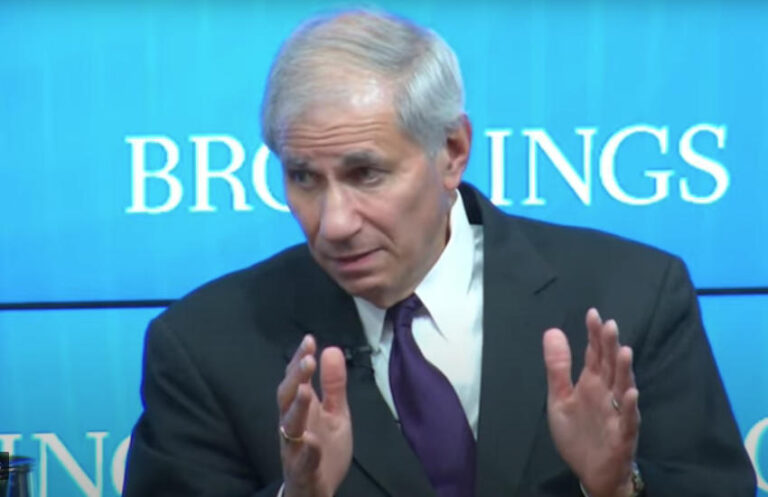
Source: www.ledgerinsights.com
Acting FDIC Chairman Martin Gruenberg sees payment stablecoins as those used for conventional real-time payments, as opposed to existing stablecoins, which are primarily used within the crypto ecosystem. At a Brookings Institution event today, he said that payment stablecoins should be issued only on permissioned blockchains.
Its raison d’être is the ability to know all participants, including nodes and validators, to enforce sanctions and anti-money laundering compliance.
Responding to a question after his speech, he said: “A permissionless public blockchain poses enormous challenges in terms of basic oversight responsibility for safety and soundness, consumer protection, and anti-money laundering. The (re) potential for a permissioned blockchain where you can address those issues. If you are going to look at the use of technology within the banking system, it seems to us that it has much greater potential.”
Gordon Liao, chief economist at USDC stablecoin issuer Circle, commented on a panel after the event: “We decided on a permissionless internet, which turned out to be really valuable. Not having isolated networks where you can only send email within your own network.” To address the concerns raised, he pointed to blockchain analysis as a tool to combat money laundering and enforcement of OFAC sanctions lists.
In addition, the FDIC’s Gruenberg wants stablecoin issuers to come under the oversight of prudential regulation and stablecoins to be backed by short-term Treasury bonds.
Are stablecoins used for payments in the real world?
Circle’s Liao agreed with the strong backing of payment stablecoins. “Where I think the president might have missed the mark is in the utility value of cryptocurrencies that is emerging right now. As well as bank versus non-bank issuance of payment stablecoins,” Liao said.
Gruenberg had previously commented on crypto assets more generally: “So far, we haven’t seen much evidence of benefit from crypto asset activity,” particularly with regards to financial inclusion.
Circle’s Liao identified the ability of stablecoins to lower the costs of cross-border payments, including low-value remittances.
Regulators assume that current stablecoins are fully used for cryptocurrency activities. Liao highlighted that the purpose of many stablecoin transactions is not always clear. For example, 75% of USDC wallets cost less than $100 and only 10% of USDC is held on exchanges. He later mentioned that 25% of transactions are person-to-person, not involving a smart contract.
“Therefore, it is not entirely clear to what extent payment activities are real-world payment activities versus speculative payment activities,” Liao said. (Author’s note: I’ve used USDC to make a couple of real-world payments.) However, most of the value traded is likely to be found within the crypto ecosystem.
Regarding restricting stablecoin issuance to banks, Liao noted that the Great Financial Crisis was partly due to risky products and partly because banks were too big to fail.
“By separating payment functions from banking, starting with a proper way to regulate payment stablecoins and giving non-banks access to the Federal Reserve, that could pave the way to reduce overall financial system risk.” Liao said. In the past, Circle stated that it intended to become a bank.
Read More at www.ledgerinsights.com